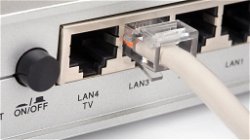Multipurpose Internet Mail Extension (MIME): Enabling Diverse Content in Email Communications
Aaron Alston
. 2 min read
The Multipurpose Internet Mail Extension (MIME) is a fundamental protocol that enhances the capabilities of email communications. Developed in the early 1990s, MIME serves as an essential framework for encoding and transmitting various types of multimedia content over the internet. Prior to its introduction, emails were limited to plain text, severely restricting the ability to share images, audio, video, and other non-textual data. However, with the advent of MIME, online chat and multimedia-rich messaging became possible, revolutionizing email communication by enabling the exchange of diverse content. This laid the groundwork for modern communication, empowering users to engage in dynamic conversations with multimedia elements.

Evolution of Email Communication
Email has been a cornerstone of internet communication since the early days of the World Wide Web. Initially, it was primarily used for exchanging plain text messages between users. However, as the internet evolved, the demand for sharing rich media content within emails grew substantially. The absence of a standardized way to include multimedia elements posed a challenge for developers and users alike. This issue led to the development of the MIME protocol.
Multipurpose Internet Mail Extension Functionality
The MIME protocol expands the capabilities of email messages by allowing various types of content to be included in an email's body. It does this by introducing a set of rules for encoding multimedia data in a way that can be transmitted reliably over the internet. The key features and functionalities of MIME include:
a. Content Type and Subtype: MIME introduces a standardized way of specifying the type and subtype of content included in an email. For instance, a JPEG image can be designated as "image/jpeg" and an MP3 audio file as "audio/mpeg."
b. Content Transfer Encoding: To ensure compatibility with diverse email systems, MIME provides mechanisms for encoding binary data into plain text. Common encoding schemes include Base64 and Quoted-Printable, which facilitate the transmission of non-textual data through email servers and clients.
c. Multi-part Messages: MIME allows the division of an email message into multiple parts, each with its own content type and encoding. This enables emails to contain both plain text and various attachments simultaneously.
Supported Content Types
MIME enables a wide range of content types, including but not limited to:
a. Text: Plain text, HTML, and other text-based formats.
b. Images: JPEG, PNG, GIF, and other image formats.
c. Audio: MP3, WAV, AAC, and more.
d. Video: MP4, AVI, MKV, and various video codecs.
e. Application-specific data: XML, JSON, and other data formats.
Advantages and Importance
MIME's significance lies in its role as a foundational technology that facilitates modern communication.
Some key advantages include:
a. Enhanced Communication: MIME enables users to express themselves more effectively by sharing multimedia content, making email communication richer and more engaging.
b. Universal Compatibility: The protocol's standardized encoding and content types ensure compatibility across different email clients and platforms.
c. Internet Standard: MIME is an essential internet standard that forms the basis for various other protocols, such as HTTP, which is used to transmit content on the web.
d. Attachment Support: By allowing attachments in emails, MIME has become an integral part of collaborative work environments, enabling file sharing among users.
Conclusion
The Multipurpose Internet Mail Extension (MIME) revolutionized email communication by enabling the exchange of diverse content beyond plain text. Its introduction in the early 1990s paved the way for multimedia-rich messaging, facilitating the global communication landscape we experience today. MIME's universality, flexibility, and support for various content types make it an enduring standard that continues to play a vital role in modern internet communications.
More Stories from
Fortifying Digital Assets: Ensuring Robust IP Security in a Connected World
It highlights the value of safeguarding intellectual property from external and internal threats, emphasizing the preservation of innovation and competitive advantage.
VB.NET Programming Web App Development: Steps, Pros, and Cons
It provides an overview of Visual Basic .NET (VB.NET), a programming language and integrated development environment (IDE) developed by Microsoft.
Decoding the DNS: Enabling Seamless Internet Connectivity
The Domain Name Service (DNS) is a vital system that translates user-friendly domain names into machine-readable IP addresses, enabling seamless internet connectivity.
LAN Event Generator: Powering the Next Generation of Local Area Network Gatherings
Discover the game-changing impact of the LAN Event Generator, a sophisticated software application designed to streamline the organization of LAN events.
Google Photos: Your Ultimate Digital Memory Keeper
Explore Google Photos: Your ultimate memory keeper with automatic backup, smart organization, and easy sharing features.









.png?width=40&aspect_ratio=1:1)


.png?width=40&aspect_ratio=1:1)